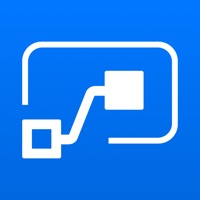



To show you how the flow development process works, I will use the Desktop recorder to create a very simple flow. The other option is to drag and drop the various elements in sequential order, thereby creating a flow. These tools record your activity and then turn the steps you have performed into a flow that can be repeated on an as-needed basis. The first option is to use either the Web recorder or the Desktop recorder. Upon doing so, you will be taken to a screen to begin creating your first flow.Īs you can see in the figure, there are two main options for creating a flow. This will cause the app to open the Build a Flow screen which requires you to provide a name for the flow you create and then click the Create button. To create a flow, click the New Flow button shown in the screenshot above. Once the database is ready, you will be taken to the screen shown in the screenshot below.īecause the app was only just installed, no flows currently exist. Depending upon the speed of your system, this process can take a little while to complete. The first time that you open the app, it will create a database. When the installation process finishes, you can open the newly installed Power Automate Desktop app. Incidentally, you can install Power Automate Desktop without allowing remote connections, but if you do, you will only be able to run automations in attended mode. For example, the installer asks for permission to allow remote connections to the computer. If you look at the screenshot below, you can see that the installer asks for permission to do a number of things that could potentially compromise your security. Even so, there is one thing that you need to pay attention to. The process of installing Power Automate Desktop is relatively straightforward. As you can see in the screenshot below, you will need to download the app before you are able to use it. When you do, Power Automate will open the Build a Desktop Flow window. To do so, open Power Automate, select the Create tab and then click on the Desktop Flow option. The first step in creating a desktop flow is to install the Microsoft Flow app. This app can be used to automate tasks on your Windows desktop. More recently, however, Microsoft has created a desktop version that is aptly named Power Automate Desktop. If you are not familiar with Power Automate, it’s a tool that allows you to automate workflows within the Microsoft 365 ecosystem. Power Automate has long been a part of the Microsoft 365 suite.


 0 kommentar(er)
0 kommentar(er)
